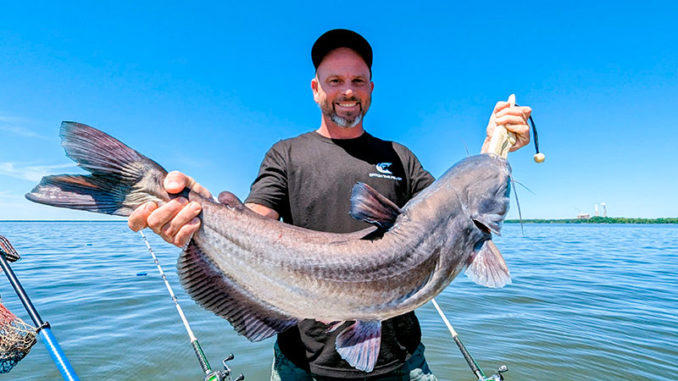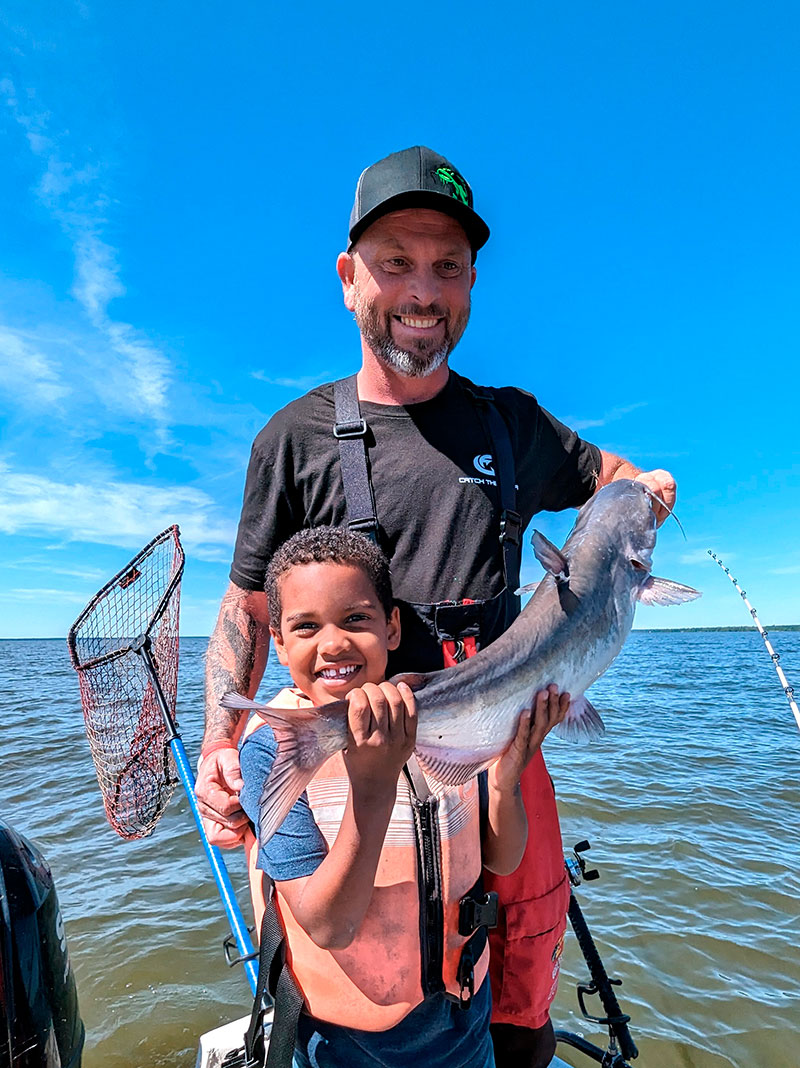
July brings change, yet some stability, to fishing on the Santee Cooper lakes.
One major change is that as of June 15, the striper fishing season is closed until Oct. 1. The reason for the closure is to protect the striper resource because of high mortality, even when caught and released immediately back into the lakes.
By July, the brief lull in the opportunity to hook big catfish on a “regular” basis gets back on track now that the spawn is basically complete. The return to normal from the spawning process isn’t an overnight event. But by July, good summer fish-catching patterns are the rule.
And that’s part of the stability. The summer patterns for most species are now locked into place.
Scattered
Not all catfish are found in deep water during the summer, and the time of day or night being fished is a link to where catfish are found.
Professional catfishing guide Paul Blackwell said everything from shallow water in the flats, to deep water along the ledges, is in play for big catfish this month.
“Big catfish get on specific patterns. But when trying to determine a pattern, my first effort during the day is an early morning, anchored setup for a shallow-water bite,” Blackwell said. “In the low-light conditions, big fish in the 20-pound class and larger size, can be shallow. I’ll set up in 6 feet of water and fan cast rigs around the boat to cover even shallower water, as well as nearby deeper water.”
His setup will be in shallow water, but he’ll be anchored along, or near, a ditch or hump with deeper water access that catfish will use as a travel route. He’ll cast rigs in multiple depths of water to target fish moving through the area.

“I want to see forage in the area and sometimes I’ll set up on mussel beds, another favored summertime catfish food source,” he said.
Blackwell (864-202-3095) said that if this tactic produces good action early, then slows, he’ll move to nearby deeper water and begin drift fishing.
“If I’ve found some quality fish early, I don’t want to leave that area, just move deeper as the fish transition from the shallow water,” he said. “I may only move to 8- to 12-feet of water to continue catching fish. But the fish are likely more scattered. So I’ll drift to cover more places.”
Blackwell said his basic pattern is to stick with shallow water during the day.
“I may not fish deeper than 20 feet deep during the day, even in the summer, because I’m targeting big fish that are in a bite mode and if they’re shallow, they’re more likely to bite,” he said.
At night, he’ll reverse the process. And just before dark, he may drift fish in 20 feet of water and gradually move toward the shallows, eventually anchoring in shallow flats near deep water after dark.
“I probably prefer to fish at night during the summer. But fishermen can still catch quality fish during the day,” he said. “The key is to fish around forage and food sources, and keep hunting them until you get on the productive pattern.”
Panfish
Both crappie and bream are on a good bite during the summer. Crappie are trending in the deep water around brush and woody cover. Bream are still primarily in the shallows.
Crappie will move into deep water and generally hold in 15 to 35 feet of water, around and over brush throughout both lakes Marion and Moultrie. Anglers may have to hit multiple targets before getting on a strong bite. But odds are good once they find a productive spot, it will produce multiple crappies.
Crappie move in search of forage. And while they prefer to congregate near brush and woody cover, they’ll move until they find food. That’s why the same brush piles won’t always hold crappie all the time. Forage needs to be in the area.
Bream fishing is consistently good in the shallow water with fish still bedding throughout the summer months.
But even bream that are not bedding are still in the shallows because of abundant forage around weeds, pads, trees, and brush.
July is prime for huge mayfly hatches, and if you find a big mayfly hatch while searching for bream, you can fill out your limits of big fish in short order.
Flip a cricket into the mayfly hatch and an arm-jarring bite will likely ensue. Mayflies attract panfish of all sizes. So you may have to cull. But big bream will feed in these areas.
Never too hot:
Catfish are very willing to bite in even the hottest weather, and anglers can also find plenty of crappie and bream willing to bite, if they know the right techniques and where to look.





Be the first to comment